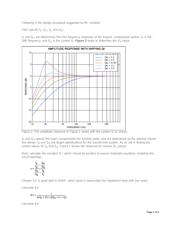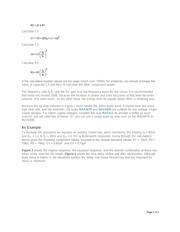herunterladen

Attend this brief webcast by Maxim on
TechOnline
Maxim > Design Support > Technical Documents > Application Notes > Audio Circuits > APP 4525
Keywords: equalizers, low-noise low-distortion op amps, low-frequency loudspeakers, bass response
APPLICATION NOTE 4525
"Linkwitz Circuit" Equalizes a Closed Box
By: Leo Sahlsten
Dec 21, 2010
Abstract: The Linkwitz equalizer, intended for complex-pole systems in which Q > 0.5, neutralizes the
original response by compensating the original poles with zeros, and then creates a new highpass
response as specified by the designer. Like the original, the new circuit provides a 2nd-order response.
A similar version of this article appeared in the May 6, 2008 issue
of EE Times magazine.
The linearity and high power-handling capability of modern low-
frequency loudspeakers have made it easy to electronically extend
the bass response. This extension is especially useful in second-
order systems like a closed box, where cone excursions are limited
by the box.
Many such circuits are available, but the most popular today is the
so-called Linkwitz equalizer¹ intended for complex-pole systems in which Q > 0.5. The circuit neutralizes
the original response by compensating the original poles with zeros, and then creates a new highpass
response as specified by the designer. Like the original, the new circuit provides a 2
nd
-order response.
Figure 1 shows the basic circuit for one channel (two are required for stereo). The circuit must be driven
by a low-impedance source, so you should provide a buffer stage in front of it. Because the Figure 1
circuit inverts the signal, this buffer should be an inverting type to maintain the original signal phase.
Figure 1. This "Linkwitz transform circuit" lets you neutralize the original response of a bass circuit, and
substitute new complex poles that improve the bass response.
Page 1 of 5







